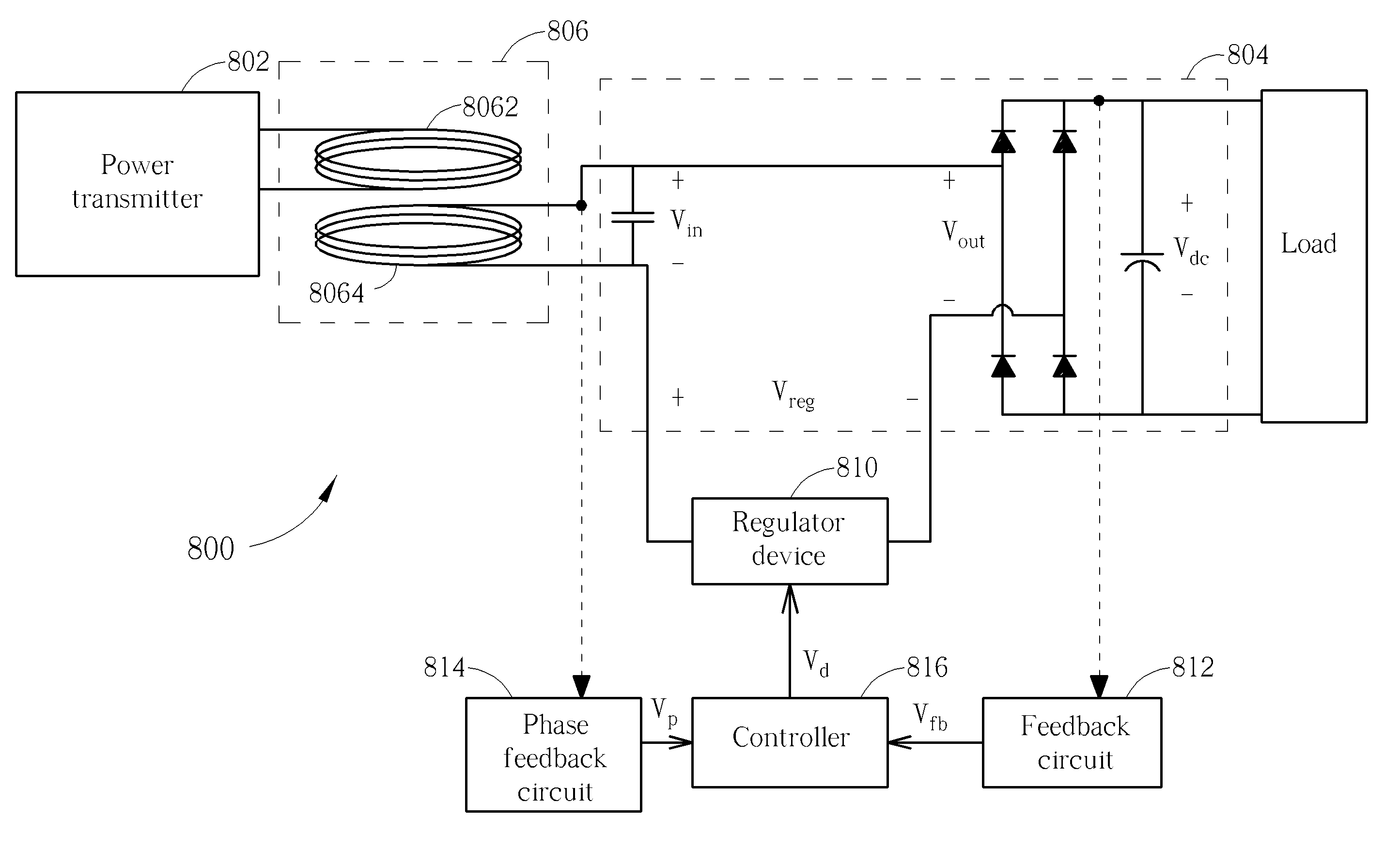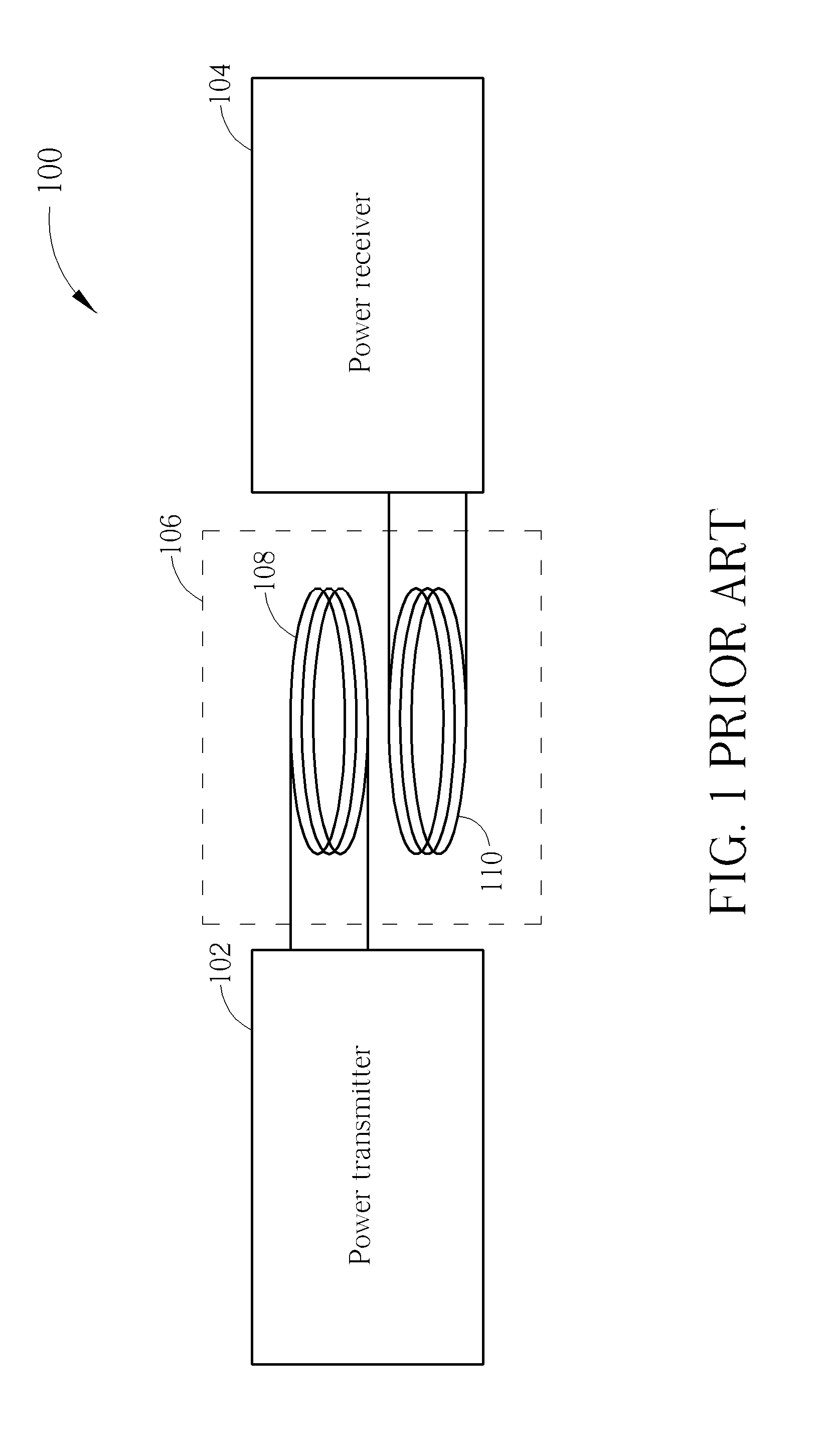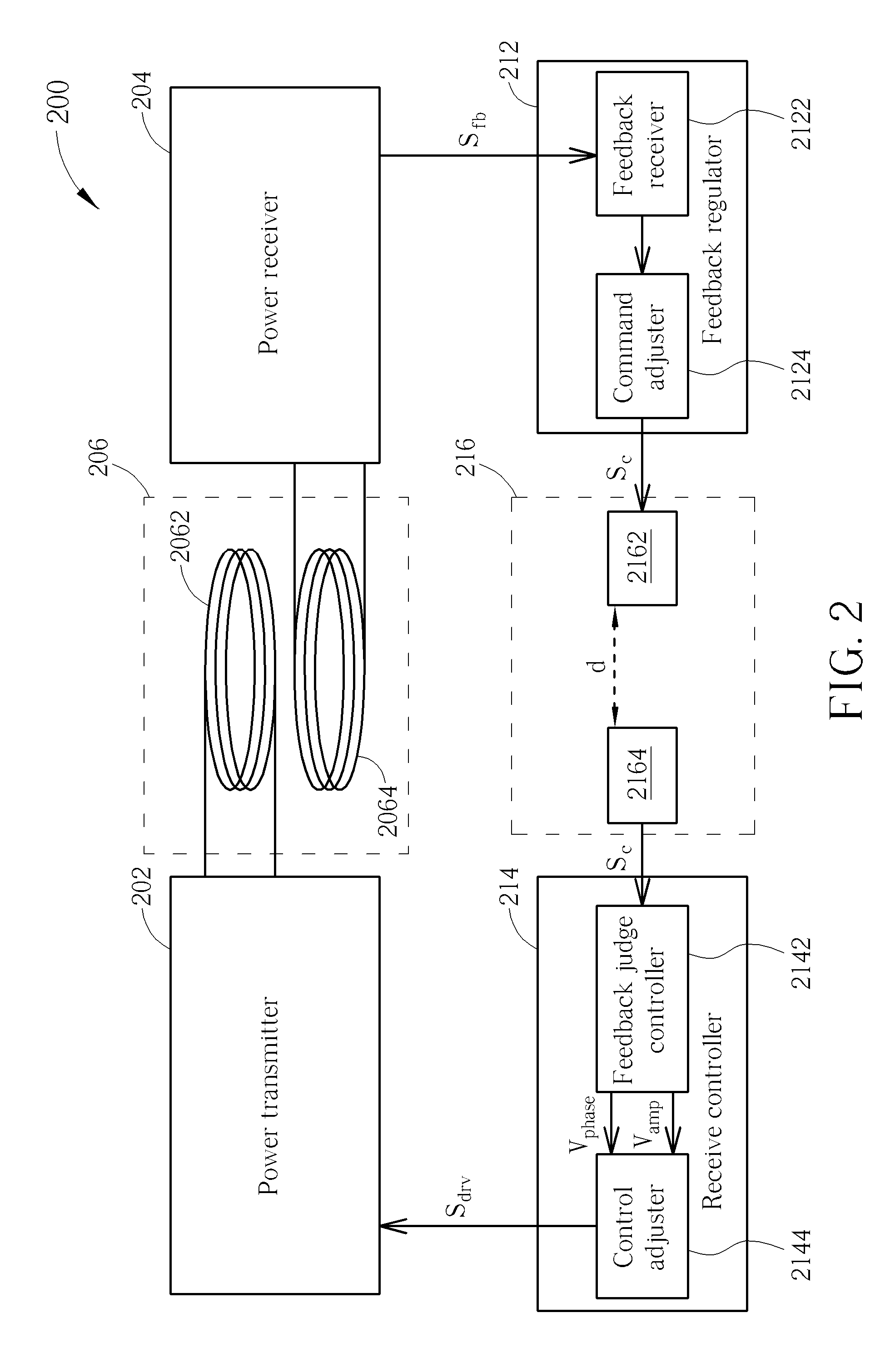Wireless power transmission device
a power transmission device and wireless technology, applied in the direction of transformer/inductance circuit, circuit arrangement, inductance, etc., can solve the problems of control errors and instability of wireless charging modules, the inability to apply higher power transfer, and the interference becomes more sever
- Summary
- Abstract
- Description
- Claims
- Application Information
AI Technical Summary
Benefits of technology
Problems solved by technology
Method used
Image
Examples
Embodiment Construction
[0035]Please refer to FIG. 2, which is a diagram illustrating a wireless power transmission device 200 according to an embodiment of the present invention. The wireless power transmission device 200 may include a power transmitter 202, a first transmission unit 206, a power receiver 204, a feedback regulator 212, a receive controller 214, and a second transmission unit 216. The first transmission unit 206 may include a first inductive element 2062 and a second inductive element 2064. The feedback regulator 212 may include a feedback receiver 2122 and a command adjuster 2124. The receive controller 214 may include a feedback judge controller 2142 and a control adjuster 2144. The second transmission unit may include a first conductive element 2162 and a second conductive element 2164.
[0036]The power transmitter 202 is used to convert DC voltage to AC voltage having a predetermined frequency and amplitude. FIG. 3A is a diagram illustrating the power transmitter 202 according to an embo...
PUM
| Property | Measurement | Unit |
|---|---|---|
| power | aaaaa | aaaaa |
| rectified output voltage | aaaaa | aaaaa |
| phase | aaaaa | aaaaa |
Abstract
Description
Claims
Application Information
 Login to View More
Login to View More - R&D
- Intellectual Property
- Life Sciences
- Materials
- Tech Scout
- Unparalleled Data Quality
- Higher Quality Content
- 60% Fewer Hallucinations
Browse by: Latest US Patents, China's latest patents, Technical Efficacy Thesaurus, Application Domain, Technology Topic, Popular Technical Reports.
© 2025 PatSnap. All rights reserved.Legal|Privacy policy|Modern Slavery Act Transparency Statement|Sitemap|About US| Contact US: help@patsnap.com



